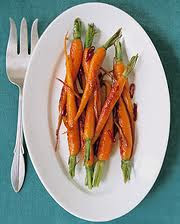Chana Masala (Curried Garbanzo Beans)
Ingredients :
1 yellow onion, diced small
3 toes garlic, minced
1 jalapeno, diced (seeded and deveined if you don’t like alot of heat)
2 cup garbanzo beans (already cooked)
2 cup diced tomatoes, canned (I use Muir Glenn, they are the best)
5 red jacket potatoes, diced
4 cups vegetable broth
1/2 teaspoon coriander
1/2 teaspoon tandoori masala
1/2 teaspoon dry mustard
1 teaspoon chili powder
1 teaspoon salt
1/2 teaspoon pepper
1 teaspoon cumin (I use 1/2 teaspoon ground and 1/2 teaspoon whole seeds)
1 1/2 tablespoon muchi curry powder ( get a good quality curry it makes all the
difference in the world)
1/2 teaspoon garlic granules
1 bay leaf
1/4 teaspoon basil
1/4 teaspoon oregano
1/4 teaspoon paprika
1/4 teaspoon fenugreek
1/4 teaspoon turmeric
1/4 cup fresh cilantro (+ 2 tablespoons reserved)
Directions:
Heat a small amount of oil in a 1 quart skillet, or a pot is fine if you don’t have one. Add onion and cook for 2-3 minutes on medium high; add garlic and jalapeno, cook a few more minutes; add garbanzo, potato, tomato, stock, herbs and spices, reduce heat to medium low and cover. Cook until potatoes are soft and most of the liquid has cooked off.
Remove from heat and smash some of the solids to thicken the sauce. Stir in reserved cilantro before serving. Serve with brown rice and nann or cornbread.
Heat a small amount of oil in a 1 quart skillet, or a pot is fine if you don’t have one. Add onion and cook for 2-3 minutes on medium high; add garlic and jalapeno, cook a few more minutes; add garbanzo, potato, tomato, stock, herbs and spices, reduce heat to medium low and cover. Cook until potatoes are soft and most of the liquid has cooked off.
Remove from heat and smash some of the solids to thicken the sauce. Stir in reserved cilantro before serving. Serve with brown rice and nann or cornbread.
*all the spice measurements are approximate, I just go by taste and adjust along the way*
Serves: 4-6
Preparation time: 30-45 minutes
Serves: 4-6
Preparation time: 30-45 minutes
Your suggestion’s and your queries can be mailed to us details:
Face Book Page : http://www.facebook.com/pages/Future-Light-FL/165768016788233
Face Book Group : http://www.facebook.com/home.php?sk=group_167796479924398
We Support Green : http://www.facebook.com/home.php?sk=group_131262723599817































